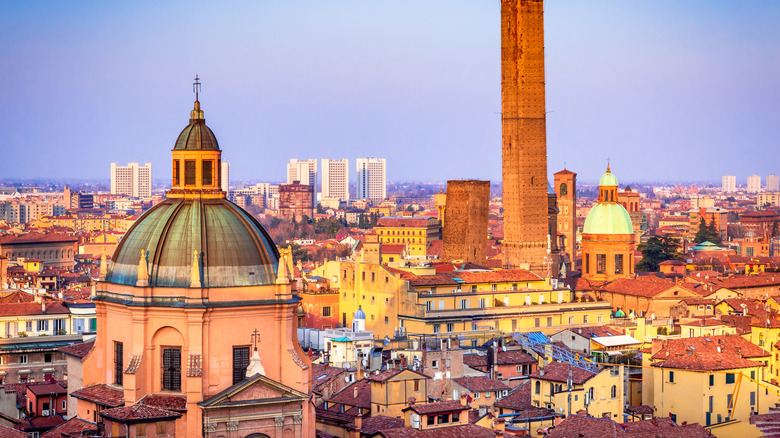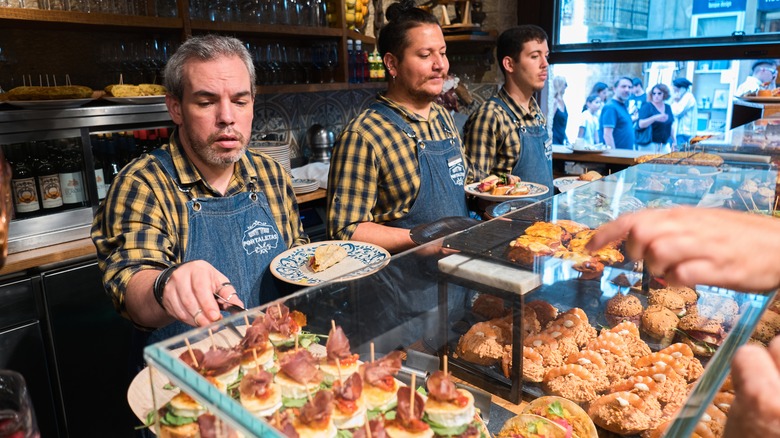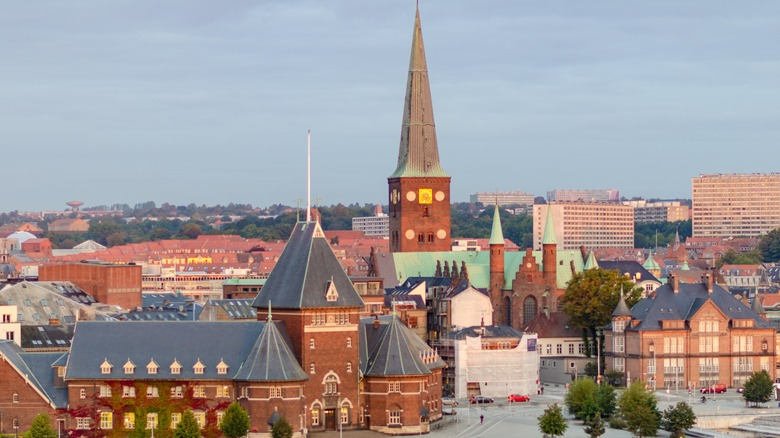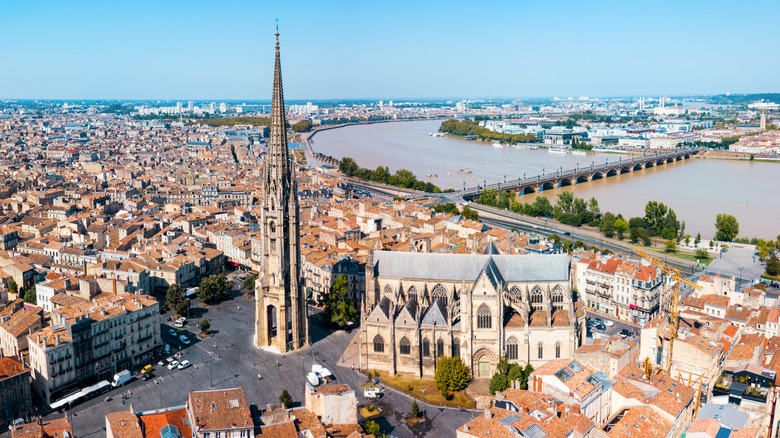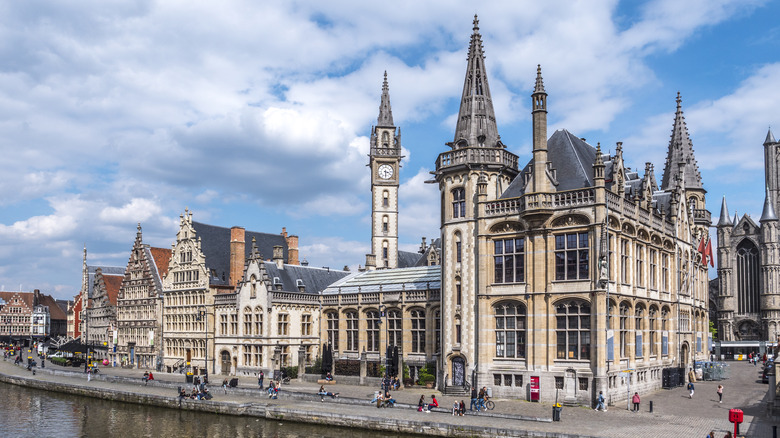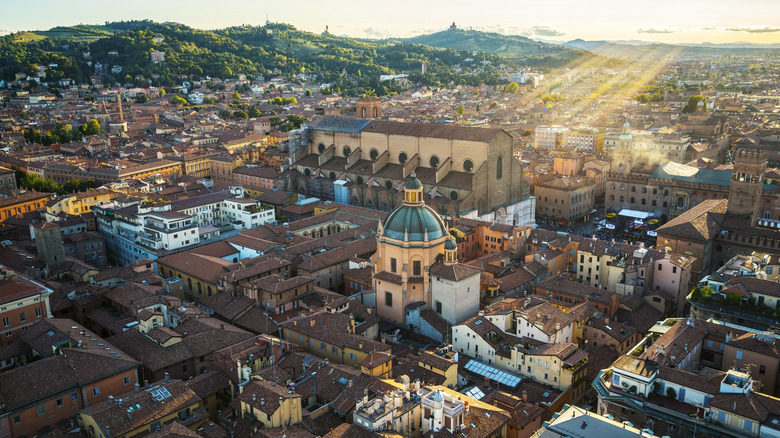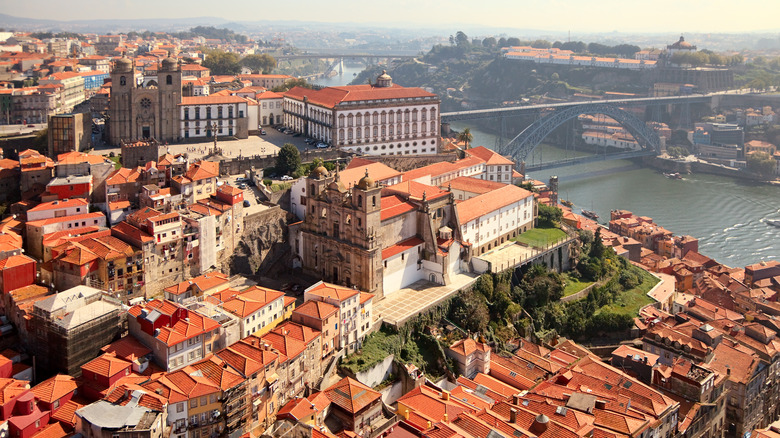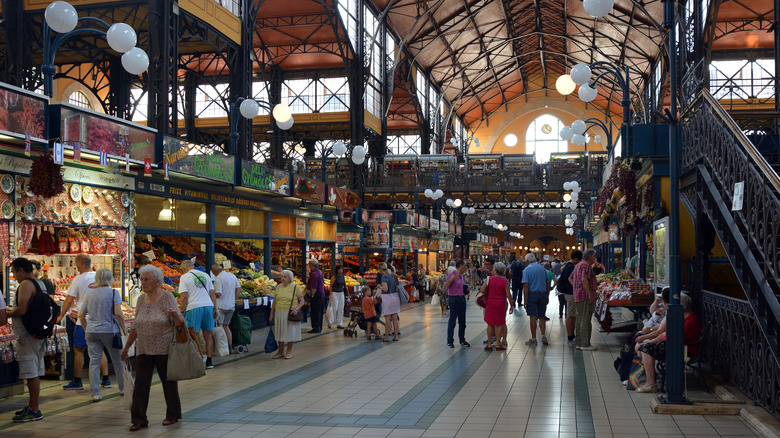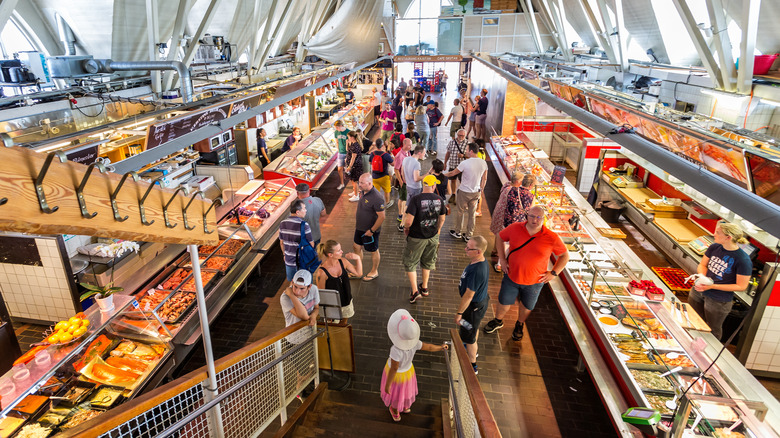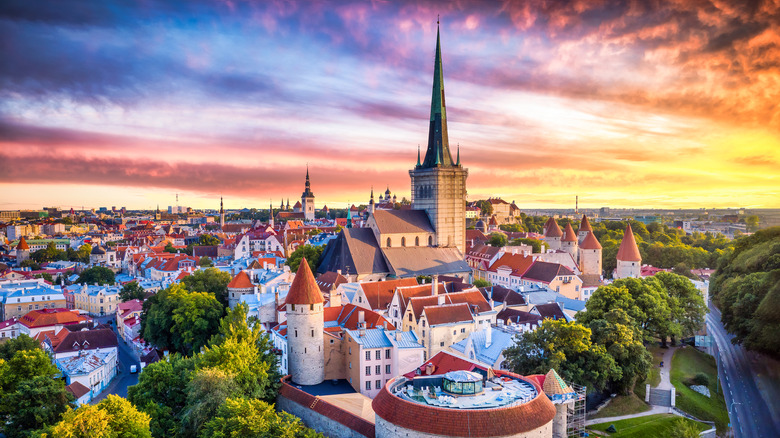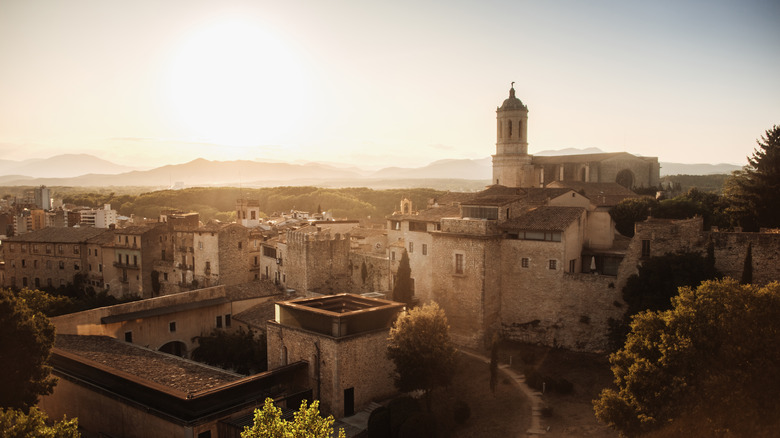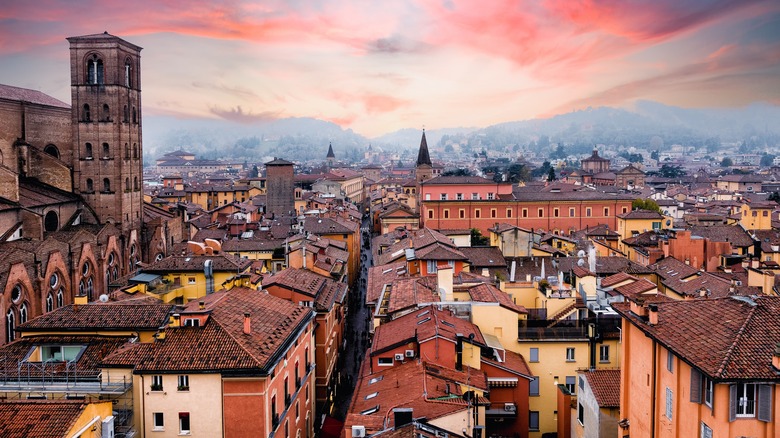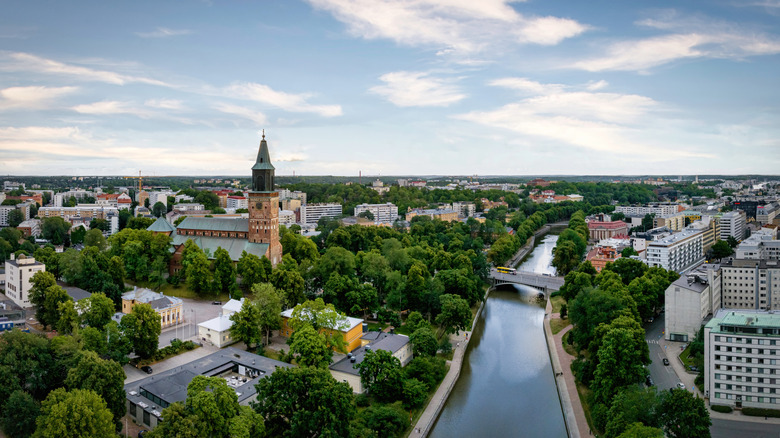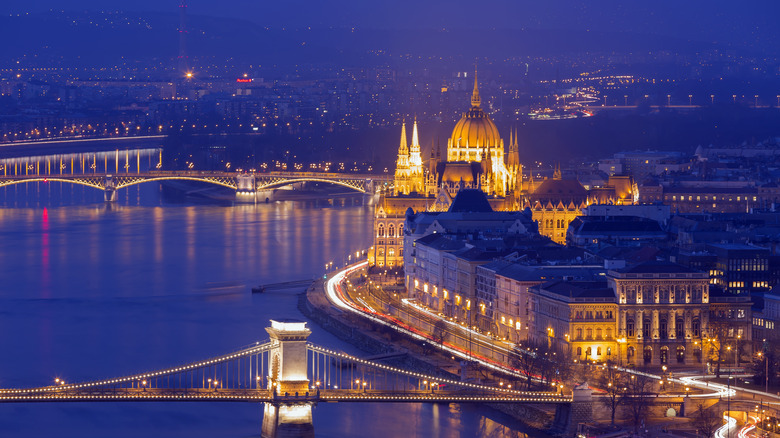The Most Underrated Destinations In Europe For Foodies, According To Tastemakers
European cities like Paris, Rome, and London have acclaimed dining scenes that seasoned travelers already know about, meaning no one is finding hidden gems or reasonable prices there. But those looking to discover authentic dining destinations that haven't yet attracted hordes of tourist traps don't have to fly much further. Europe has several food-centric cities that have yet to be tapped by the masses, which means its unspoiled restaurants are ripe for trying. In these underrated European food cities, the ingredients are fresh, and young, driven chefs are running acclaimed kitchens. Additionally, the Michelin Guide is knocking on doors, and no matter how long you're staying, you'll wish you had time for one more meal.
To create our list, Explore researched lesser-known European cities using our selection criteria. Our assessment considered those that have received the most media attention, attracted the most cutting-edge chefs, and have the most highly-reviewed restaurants serving unique cuisines. Learn more about our methodology at the end of this article.
San Sebastián, Spain
Forget posh, cosmopolitan cities; San Sebastian has the second-highest number of Michelin-starred restaurants per square meter in the world. As of 2022, 19 of its eateries had Michelin ratings; three had achieved the highest recognition, three stars. Patrons do not mind the cost because high-quality food is just a way of life. However, it's not hard to prepare amazing food in a city on the Bay of Biscay since the seafood is as fresh as it gets. San Sebastian also has several local and seasonal food markets supplying those same Michelin-starred restaurants.
One of those Michelin-acclaimed spots is Mugaritz, which has been named the eighth-best restaurant on the planet. But you don't need to eat from a white tablecloth or indulge in Mugaritz's 20-course tasting menu to enjoy all San Sebastian offers. The Spanish city is known for its pincho bars, which are tapas-like bread slices topped with everything from anchovies to quail's egg. People hop from bar to bar, sampling small plates as aperitifs with friends before heading home or to a restaurant for dinner with loved ones.
Aarhus, Denmark
Copenhagen's Noma, named the world's best restaurant five times, is closing in Denmark. However, Copenhagen's quiet neighbor, Aarhus, is ready to take on the country's ambitious eaters. Over the last few years, it has become a dining destination, offering everything from a Michelin-starred restaurant to two street food markets to a whole sampling of sustainable eateries. It's also a hidden gem holiday destination. If you want to see it all at once, set your taste buds on the Aarhus Street Food or Central Food Market food courts. These host plenty of stalls selling everything from duck fat burgers to baba ganoush to homemade pasta.
To experience the Michelin crave, reserve a table at Substans, which is so acclaimed that it doesn't need a menu, so you have no choice but to trust the chef. Or, for a unique yet sustainable dining experience, head to Restaurant Moment in Mols Bjerge National Park. Here, a tree is planted for every reservation, and housemade kombucha is perfectly paired with each course. The restaurant also has its own garden and pond. But that's not even the only sustainable spot in green-city Aarhus. Berta Bakery only uses dairy products supplied directly by a dairy farmer. At Langhoff & Juul, the sole goal is to highlight local fruits and vegetables, including edible flowers. Looking for an after-dinner cocktail? Gedulgt has cocktails that utilize local ingredients, even mimicking international liquors.
Bordeaux, France
Bordeaux, France, is known for its wine scene, as it's the home to some of the finest wineries on the planet partly due to its location and weather, which are optimal for winemaking. However, those sommeliers must have gotten hungry somewhere along the line because these days, the Atlantic coastal city has a food scene that is also one to be reckoned with. It has a huge selection of fine dining restaurants – especially for a smaller city — that know how to pair a glass with a plate. That includes La Tupina, a landmark Bordeaux restaurant known for its classic French cuisine like sanguette and macaronade. Or, get a luxe meal with a view at Le Quatrième Mur, which has a dining room set inside a former theater and serves its own red wine sauce made from a local Bordeaux.
Bordeaux has such a distinctive dining scene that it has a long list of local delicacies, such as caneles, which are rum and vanilla cakes that frequently garner a line outside La Toque Cuivrée. The eatery even has a proprietary recipe protected by a formal brotherhood. Another local must-try is a Cap Ferret oyster, which local chefs often scoop up to serve at their high-end restaurants. To get a little taste of everything gourmet that Bordeaux offers, take a stroll through one of its food markets, such as Les Halles Bacalan, which houses nearly two dozen food artisans hawking their goods.
Ghent, Belgium
Ghent, Belgium, is a city with longevity in its bones, as it's home to the second-largest city center on the continent and a UNESCO World Heritage site. But despite the city's age, it has beckoned young chefs and mixologists who are transforming its dining and bar scenes. That includes those who have become known as the "Flemish Foodies" – named after three young chefs who worked in Michelin-starred restaurants before opening their own spots in Ghent. Other chefs followed, and Ghent became an inventive culinary hotspot that isn't afraid to mix eclectic fare with historic environs. Its restaurants serve a far cry from the typical moules frites-type dishes that Belgium is known for.
One of those must-try restaurants is Aroy Aroy, a Thai eatery owned by a Michelin-starred chef who pairs modern Thai dishes with craft beer, thanks to the chef's brother, who used to work in Thailand. For vegans or vegetarians, there's Roots, an intimate eatery that brings out the best flavors of local produce. But with at least a half-dozen hailed cocktail bars in the middle of Ghent alone, a drink in this city is a must. For a taste of the islands, head to Fugazi, which offers 400 rums and makes all its cocktail ingredients in-house. Or, for a more refined drink on the rocks, grab a spot at The Cobbler, a speakeasy-style cocktail bar atop the hotel 1898 The Post, which subjectively offers the best view in town.
Bologna, Italy
Tourists heading to Italy clamor for cities like Rome, Florence, and Venice, but they often miss out on Bologna, which is named by some as the world's favorite food city. That's unsurprising considering that Bologna is known as "La Grossa," which means "the fat one" in Italian. The city in the northern Emilia Romagna region is the birthplace of tons of iconic Italian fare, such as Parmesan, balsamic vinegar, mortadella, and Parma ham, and there's no better place to get it than here. Plus, Bologna makes its many delicacies easy to find thanks to the city's food markets, like Mercato delle Erbe. This is one of the most authentic Italian markets in the country. The Quadrilatero is the oldest food market in Bologna, which dates back to the Renaissance period. Mercato di Mezzo, a three-story market, operates until midnight every day.
If you're looking for a sit-down meal in this food city, you won't have to worry about tourist traps, which are present in many other parts of Italy. Bologna receives nearly ten times fewer tourists than other Italian hotspots, and many of the city's restaurants cater to the local crowd. Eating at these trattorias and pizzerias is even more delicious due to locals' habit of popping by different places for aperitivos before heading out to dinner at 9 p.m. This means you can try a little bit of everything — like Negronis, pizettes, and more — well before dinner time.
Porto, Portugal
Want evidence that Porto, a Portuguese city known for its port wine, is becoming a culinary powerhouse? Ask the Michelin Guide. For the first time, the organization is launching a guide for Portugal in 2024, and Porto, often forgotten in favor of Lisbon, is becoming the frontrunner. Unlike other foodie cities, it's not about modernity and molecular gastronomy here — it's all about celebrating modest cooking and simple, fresh ingredients. That's not hard to do in Porto, a seaside city with some of the best seafood in the world. It's known for its cod, crab, trout, lobster, and sardines, all served at reasonable prices. It's also a European foodie destination that's a great spot for a fall getaway.
If fine dining is your jam, Porto has that, too. Twenty of its restaurants have Michelin stars. Some of the favorite spots for a refined bite include Euskalduna Studio, an open kitchen flanked by an intimate, 16-seat marble counter where a Michelin-starred chef cooks for diners. Or, for unpretentious fare like the city's staple francesinha sandwiches, which include a variety of meats and a fried egg, melted cheese, and a tomato gravy sauce, head to the ever-busy Café Santiago. Another cozy favorite is Dona Maria, a classic Portuguese eatery with a fantastic wine cellar. No matter which Porto restaurants you choose, you'll always have a beautiful view with your meal since the city is full of colorful, historic dwellings.
Budapest, Hungary
After World War I, Budapest, Hungary was a shadow of its former self, dominated by Soviet rule and communism. But in the decades since its fall, it's been back on the up-and-up, finally enjoying hordes of tourism, a flourishing economy, and a vibrant food scene. Budapest has seven Michelin-starred restaurants, which is even more impressive considering the city received its first star in 2010. So don't get it twisted; this city is far from its meat-and-potatoes past. Budapest is also one of the most vegan and vegetarian-friendly cities in Europe. High-quality ingredients are now available near the city, which means many of the young chefs finally have their pick of the litter to bring their restaurants to the next level.
Diners can indulge at commended spots like Stand25 Bisztró, with two celebrity chefs at its helm bringing classic Hungarian eats to life. Another high-end spot is the Michelin-starred Babel Budapest, set between medieval ruins and a historic church that serves Austro-Hungarian cuisine with an upscale kick. Or, for a down-home meal with a blast from the past, head to Bambi Eszpresszó, which features a socialist-modern style interior (having opened in 1961) and serves everything from scrambled eggs to frankfurters. To get a true taste of the authentic eats of this age-old city, foodies should also spend an afternoon exploring Central Market Hall, a massive food hall that sells ingredients and meals at restaurant stands.
Gothenburg, Sweden
There's a reason Scandinavian restaurants like Noma can fly so high. Nothing compares to Nordic ingredients, which is partly why Gothenburg, the second-largest city in Sweden, has undergone a culinary revolution. One of those ingredients is seafood, served at Feskekörka, a fish market that's so beloved that it's known as "Fish Church." But despite the seriousness of the seafood, restaurants, and other Nordic ingredients served in Gothenburg, the city retains a fun, unpretentiousness at many spots. Feel free to dine alone here since Gothenburg is one of the most fun European cities for solo travelers.
No matter where you go, you'll find creative eats only possible in such an untapped city; an example is the meals offered by Koka. The restaurant is run by a Michelin-starred chef who catches some of the eatery's fish. Or, for more seafood served by a master chef, grab a table at the understated eatery Restaurang Gabriel, which is inside Fish Church and is run by a chef who won the World Oyster Opening Championship in Galway, Ireland. Here, patrons are served raw or cooked seafood from the North Sea. At SK Mat & Människor, which also has a Michelin star, the chefs are so committed to their cuisine that they pop out of the kitchen to explain a dish to a diner. The city is so good at cheffing that it's where celebrity chef Marcus Samuelsson grew up and cut his chops.
Tallinn, Estonia
Estonia has every reason not to be an emerging food destination. For one, it only gained independence in 1991 and has had little time to develop its culinary scene. It also has wintry weather for eight months out of the year, making sourcing local ingredients challenging. Lastly, its diners aren't accustomed to paying the high prices common in other European countries. For some of the same reasons, Tallinn, the largest city in Estonia, is a new food hotspot. Chefs in the city are now embracing what the country does best in the kitchen. These include serving meats and wild game suitable for chilly weather, preserving produce by pickling, smoking, salting, and drying them, and serving ingredients straight from the lush land. And for diners, that's even sweeter since restaurant prices are much lower than their European counterparts.
To experience this first hand, visitors should try spots such as Restaurant 180° by Matthias Diether, an open kitchen eatery founded by a Michelin-starred chef, where diners can see chefs at work preparing the tasting menu while enjoying an amazing view of the Baltic Sea. Another favorite is NOA, which has been named the best restaurant in the Baltic region several times and cooks some of its tasting menu dishes over an open flame right in front of customers. Or, there's super-sustainable Fotografiska, a Michelin-starred restaurant that uses every part of animals and produce in its kitchen and bar.
Girona, Spain
Barcelona might be well-known for its dining scene, but there's a reason why residents regularly drive an hour to reach neighboring Girona, Spain. The city is a culinary wonderland with its own takes on Spanish cuisine, like Mediterranean seafood, rice dishes, fish stews, and more. And with outstanding local produce and a prime location near the coast of the Balearic Sea, why wouldn't it?
If you need proof of legendary food in Girona, just look at the World's 50 Best Restaurants lists, perhaps the highest accolades possible in gastronomy, and see that Girona is home to one of the winners. El Celler de Can Roca, run by the Roca brothers, has been named the best restaurant on the planet twice. If you get a reservation, which opens up 11 months in advance for just one hour per month, you'll enjoy Catalan eats with modern takes like caramelized olives hanging from a bonsai tree. Or, to visit a real, local hangout, grab a table at Plaça del Vi, which has modernized the oldest versions of Catalan recipes from 14th-century books.
Palermo, Italy
In Palermo, located in the Sicily region of Italy, where the Mafia was born and kept society and businesses oppressed, traditional food is based on ingredients that would be thrown away in other places. Today, the city has developed a unique and decadent cuisine influenced by a culture where food is highly valued and must always be made delicious. That philosophy is seen in the city's street food — since Palermo is, after all, located in the same region where arancini and cannoli originated. Even Rick Steves believes Sicily has some of the best food in Italy.
Unlike other food destinations, to taste the tastiest of what Palermo has to offer, don't look for a white tablecloth — search for street vendors, best found in the city's famous street markets. La Vucciria is the oldest and most acclaimed market in the city, while the Ballarò market is the busiest, most colorful, and most multicultural. Heading to the market or just to find some off-the-beaten-path street food in Palermo? Besides cannoli and arancini, look out for Sicilian specialties. For instance, frittolo, which is fried calf's cartilage and lard; sfincione, a cross between a slice of Sicilian pizza and focaccia; and crocche, crispy potato fritters.
Turku, Finland
Turku, Finland, dates back to 1229, making it the oldest city in Finland. But outsiders still haven't figured out how good its chefs are at bringing the country's local ingredients to life. And better yet, it's part of their moral philosophy. The Everyman's Law gives each person the right to ingredients salvaged from Finland's grounds, and respecting the environment and sustainability is paramount. That's why ingredients like woodland mushrooms, potatoes, seafood, and game are celebrated on every plate in Turku.
One restaurant where visitors can see this is Kaskis, the first Turku restaurant to receive a Michelin star. Here, the chef uses foraged ingredients — which he has tattooed on his hands to help him on his foraging quests — to brighten each of his dishes. Or, to get a sampling of the region's food, head to Market Hall, which is home to bakeries, cheese shops, seafood vendors, butchers, coffee shops, and more.
Methodology
To decipher which underrated European food cities were the best, Explore looked at which under-visited cities had garnered the most Michelin stars and the most acclaim from food critics and media organizations. We also examined cities with innovative, emerging chefs who have opened new, cutting-edge restaurants celebrating local cuisine with fresh takes and garnered high reviews.
